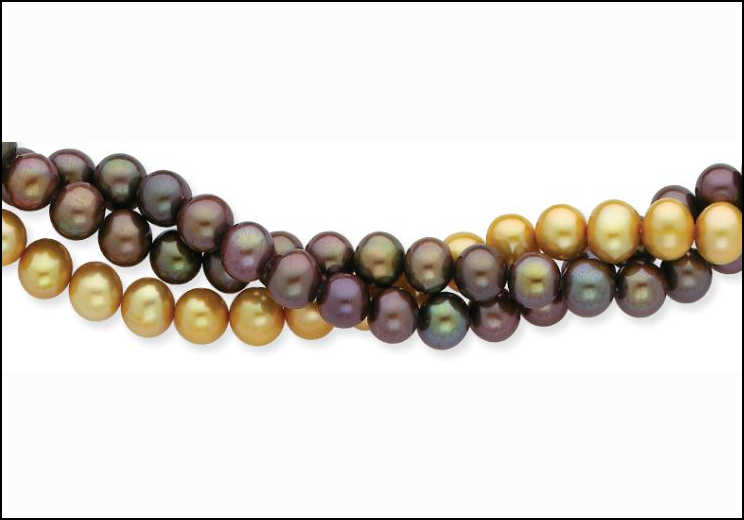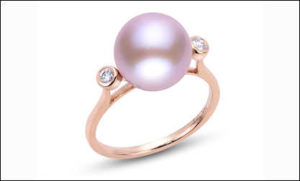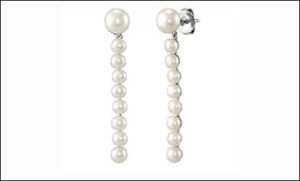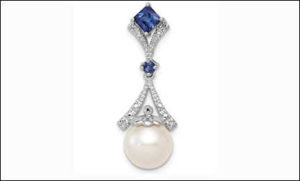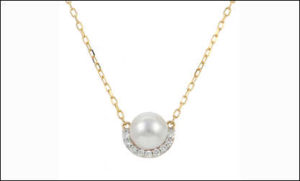Pearl Power
If you haven’t heard that pearls are the “go-to” gem and jewel of 2022, you must be living in oyster.
Pop culture media, particularly social media, is all pearl all 2022! Everyone is talking about pearls.
It has been a perfect storm of influences converging that has kept pearls in the conversation. Popular young male entertainers and athletes are sporting pearls. Celebrities are getting engaged with pearl rings. Pearls have been prominent accessories on both the small and big screen.
Pearls are relevant to everyone, across all demographics, as a benchmark study conducted by the Cultured Pearl Association (CPAA), via MVI Marketing.
Pinterest’s announcement that pearls and pearlescent details are among the top style trends for 2022, will keep pearls front of mind for a while.
If you haven’t heard the term “pearlcore” or “pearly” yet, you will. Not fine jewelry jargon, it comes from the DIY craftcore movement, an aesthetic embracing iridescent accents into your lifestyle. But nonetheless, it keeps pearls on our lips.
Pinterest finds Gen Z driving the “be jeweled” trend, focused on accessorizing the body with gem embellishments.
Kathy Grenier, vice president of business development, Imperial in Providence, Rhode Island, credits designers, who feature pearls in fresh jewelry designs, as expanding pearl perceptions. “I’m thrilled to see gens Y and Z loving pearls, that gets me excited! When retailers look at this category, it’s about them choosing pearls and being vocal to their customers in promoting them.” With so many people talking about pearls, there isn’t a better time to get into the category.
Pearl Trends
Classic and timeless, pearls have always been a symbol of good taste and elegance, says Cora Lee Colaizzi, director of marketing and catalogs and senior merchandiser for Quality Gold in Fairfield, Ohio. “Pearls go well with a ball gown or t-shirt. They’re perfect for the office or classroom. Pearls are a fantastic investment that is currently trendy but can and will be worn day or night regardless of the decade.”
The way people wear pearls is definitely evolving, says Jessica Zerega, director of merchandising gems and pearls for the N.Y. based Richline, parent company for the pearl brand, Honora. “We’re having great success with mixing bold gold chains with pearls, as well as in the dainty form, using off-shaped, baroque pearls with chain accents, from linear ears to laying pendants.”
Zerega finds layering wristwear — pearls and gem beads — a fresh way for younger consumers to sport pearls that represent their personality. “Pearls are definitely advancing into the gender-neutral zone,” she says. “As a whole, we see the gender-neutral business doing fantastically, especially as men continue to be purchasers of higher ticket, and trend right jewelry.”
So, far the demand for men, especially among young men, is primarily for simplistic strands and studs, finds Sarah Cuidon, marketing, production and sales assistant for Mastoloni. “But this is just the beginning. I’m interested in how the trend will evolve.” She mentions that retailers are asking the New York-based pearl house about pearl jewelry for men.
Apart from the traditional round pearls, Moss Makhoulian, senior vice president of merchandising for Richline sees increasing acceptance of other shapes and types of freshwater pearls, such as large, off-shape and baroque pearls in different colors. “As we go further into 2022, we will continue to observe, and see how the market shapes itself, and how consumers react.”
Making pearls accessible, wearable for everyday jewelry is trending, says Grenier. “We’re interpreting the hottest trends in fashion in pearl jewelry with different colors, shapes, varieties.”
Profiting from Pearls
Key findings from CPAA’s research reveal pearls a favorite gem; viewed as timeless, classic, and elegant, and there’s great potential to further drive home pearl’s sustainability story, especially among younger consumers. In fact, 22% of 25-35-year-olds pick pearls as their gem-of-choice.
Pearls rank among the top gems that consumers, across demographics, have purchased and would purchase as a gift for someone or themselves — in good company with sapphire, ruby and emerald, after diamond.
Pearl ownership is strong across demographics, as most jewelry consumers surveyed (66%) own at least one pearl jewel, with 69% owning a stand, 62% pearl earrings. Moreover, 65% of pearl jewelry owners have at least one family heirloom among their pearl pieces.
“If there’s one thing that’s very clear in the results of this study, it’s that pearls are already a consumer favorite, so promote your pearls,” says Grenier.
Jewelers don’t have to sell consumers on cultured pearls, because they already like, have and desire them, the survey finds. But retailers do have to invest in the product, carry a wider selection, and talk up pearls.
Fundamental to success in the pearl category is always having pearl basics in stock, says third generation pearl trader Josh Bazar for Imperial. Then, surround your pearl basics with incredible fashion. “Fashion drives a strong portion of the independent business,” says Makhoulian.
Pearls are no different than other gem category, says Grenier. “Use good display elements, like a ramp for stud earrings, a small footprint that is user-friendly for sale associates at the counter. Clear, concise merchandising makes it easy to tell the story and brings clarity to the pearl case.”
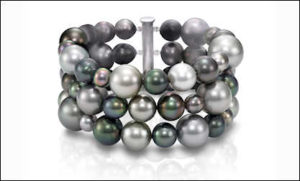 Keep pearls front and center with other jewelry to remind customers they are an option, advocates Cuidon. “It’s an opportunity to educate customers, if they express interest in pearls. There’s a lot of misunderstanding when it comes to what cultured pearls are or how to evaluate their quality that makes customers feel confused and unsure about pearls.”
Keep pearls front and center with other jewelry to remind customers they are an option, advocates Cuidon. “It’s an opportunity to educate customers, if they express interest in pearls. There’s a lot of misunderstanding when it comes to what cultured pearls are or how to evaluate their quality that makes customers feel confused and unsure about pearls.”
Education is key to confidence and confidence is key to sales, advocates Grenier. “Know your pearl virtues (luster, surface, shape, size, and color); the different pearl varieties; and where pearls come from and their journey to market.” CPAA offers a free online education course at pearlsasone.org.
The data reveals that the youngest demographic — pearls’ biggest fan base and the ones who care most about sustainable practices — is the least educated about pearls, with 21% believing a cultured pearl is man-made and 9% thinking it refers to pearls that are worn by royalty or high society.
Awareness of the term “cultured pearl” is high at 81%, but only 34% say they know exactly what that means. Awareness is highest (66%) for freshwater pearls, the most plentiful variety on the market. But awareness drops by more than half to 32% knowing about Akoya and Tahitian pearls, and 20% aware of South Sea. And, 60% did not know that cultured pearls are sustainable.
Grenier notes that pearls’ sustainable story holds the key to cultivation education. The story of responsibly cultured pearls is one of a renewable resource that contributes to the health of the marine environment, and also helps to provide sustainable income for families in remote communities.
Pearls are a popular self-purchase, as 46% of jewelry consumers surveyed by CPAA self gift pearls, and that’s across demographics. All age groups embrace buying fine jewelry for oneself, with younger consumers the most enthusiastic.
Pearls also are popular occasion gifts, as 52% of consumers say they have either received or purchased pearls for a birthday, 46% for an anniversary for which someone on everyday of the year is celebrating.
Close to half (46%) of jewelry consumers surveyed say they look for new cultured pearl designs and jewelry inspirations on websites and ezines, while 29% cite Instagram, 23% consumer magazines, and 20% other social media.
Makhoulian advocates jewelers piggyback on the current media frenzy over pearls, sharing images and news of celebrities and influential people wearing pearl jewelry. And, Cuidon shares how trusted pearl vendors can provide retailers with the right material to market pearls on social media.





